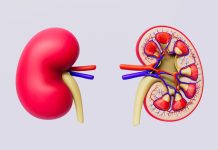
If you have type 2 diabetes, you know two lifestyle strategies are very important: a healthy diet and regular exercise.
Good daily exercise not only can help improve your metabolic functions but also can help you control body weight. Lots of people with type 2 diabetes also face the problem of being overweight or obese.
Recently, a Japanese research team finds that resistance exercise can help improve insulin resistance and blood glucose level.
Although their study is conducted on rats, not human, the results provide hope for effective type 2 diabetes control.
It is known that type 2 diabetes makes the body develop a resistance to insulin. This is a hormone that helps the body absorb glucose from the bloodstream and use it for energy.
Insulin resistance leads to a dangerous rise of blood sugar levels and can happen in many parts of the body, including the muscles.
To improve the situation, there must be some mechanism to reduce insulin resistance.
Recently, researchers find that a protein called APPL1 can regulate glucose absorption in the fat cells. The protein can also increase insulin sensitivity in the muscles.
In the current study, researchers checked how resistance training influenced APPL1 in rats.
If you do resistance training (or weight training), you know that this type of exercise can help you gain muscles and become stronger. Strong muscles are very important to delay aging.
Common resistance training includes lifting weights, carrying weighted bars, carrying kettlebells and using resistance bands.
In the study, the researchers tested two groups of rats: one group of rats had type 2 diabetes and one group was healthy. Both groups of rats took resistance training on one leg for 6 weeks.
Before the study, the rats with diabetes had lower APPL1 expression and higher insulin resistance than the healthy rats.
However, after 6-week of resistance training, both of these measures had improved in the exercised leg of diabetic rats.
Moreover, the team found that resistance training increased APPL1 expression by activating signaling pathways.
Therefore, they concluded that long-term resistance training can improve insulin resistance in muscles.
Now the question is whether the finding can be applied to human.
Many people tend to ignore medical research findings from rats studies, but scientists choose rats for a good reason.
Rats or mice play an important role in medical research.
Like humans, they are mammals, and their bodies undergo many similar processes, such as aging, and have similar immune responses to infection and disease.
Their hormone systems are a lot like ours, too. They’re also one of the first species — along with humans — to have had their complete genome sequenced.
So far we’ve learned they share approximately 80% of their genes with us.
Some medical studies simply hard to be conducted on human, especially on patients, and rats (mice) help a lot.
Some most important breakthrough medical findings come from rats studies, such as treatment of blood cancer and how neurons in the brain talk with each other.
The current finding still needs more research to confirm, and ideally, it should be done on people with type 2 diabetes one day. This research provides us new knowledge about how exercise can help control the disease.
Copyright © 2018 Knowridge Science Report. All rights reserved.



